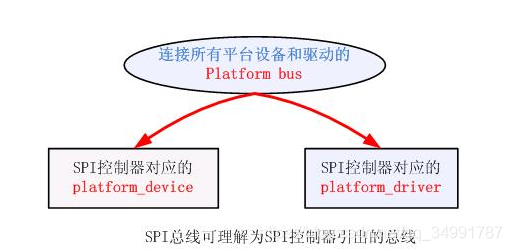上一节讲到了spi_register_master注册SPI控制器驱动

这一节描述调用spi_register_driver注册spi_driver,通过与device匹配驱动设备。

使用m25p10a举例
spi_register_driver功能跟名称一样

根据传入的spi_device参数,可以找到对应的spi_master。接下来就可以利用spi子系统为我们完成数据交互了。
定义了prob函数在prob里向上提供接口即可
spi_device端
struct spi_board_info {
/* the device name and module name are coupled, like platform_bus;
* "modalias" is normally the driver name.
*
* platform_data goes to spi_device.dev.platform_data,
* controller_data goes to spi_device.controller_data,
* irq is copied too
*/
char modalias[SPI_NAME_SIZE];
const void *platform_data;
void *controller_data;
int irq;
/* slower signaling on noisy or low voltage boards */
u32 max_speed_hz;
/* bus_num is board specific and matches the bus_num of some
* spi_master that will probably be registered later.
*
* chip_select reflects how this chip is wired to that master;
* it's less than num_chipselect.
*/
u16 bus_num;
u16 chip_select;
/* mode becomes spi_device.mode, and is essential for chips
* where the default of SPI_CS_HIGH = 0 is wrong.
*/
u8 mode;
/* ... may need additional spi_device chip config data here.
* avoid stuff protocol drivers can set; but include stuff
* needed to behave without being bound to a driver:
* - quirks like clock rate mattering when not selected
*/
}
描述一个设备
/**
* spi_busnum_to_master - look up master associated with bus_num
* @bus_num: the master's bus number
* Context: can sleep
*
* This call may be used with devices that are registered after
* arch init time. It returns a refcounted pointer to the relevant
* spi_master (which the caller must release), or NULL if there is
* no such master registered.
*/
struct spi_master *spi_busnum_to_master(u16 bus_num)
{
struct device *dev;
struct spi_master *master = NULL;
dev = class_find_device(&spi_master_class, NULL, &bus_num,
__spi_master_match);
if (dev)
master = container_of(dev, struct spi_master, dev);
/* reference got in class_find_device */
return master;
}
获取spi控制器
/**
* spi_new_device - instantiate one new SPI device
* @master: Controller to which device is connected
* @chip: Describes the SPI device
* Context: can sleep
*
* On typical mainboards, this is purely internal; and it's not needed
* after board init creates the hard-wired devices. Some development
* platforms may not be able to use spi_register_board_info though, and
* this is exported so that for example a USB or parport based adapter
* driver could add devices (which it would learn about out-of-band).
*
* Returns the new device, or NULL.
*/
struct spi_device *spi_new_device(struct spi_master *master,
struct spi_board_info *chip)
{
struct spi_device *proxy;
int status;
/* NOTE: caller did any chip->bus_num checks necessary.
*
* Also, unless we change the return value convention to use
* error-or-pointer (not NULL-or-pointer), troubleshootability
* suggests syslogged diagnostics are best here (ugh).
*/
proxy = spi_alloc_device(master);
if (!proxy)
return NULL;
WARN_ON(strlen(chip->modalias) >= sizeof(proxy->modalias));
proxy->chip_select = chip->chip_select;
proxy->max_speed_hz = chip->max_speed_hz;
proxy->mode = chip->mode;
proxy->irq = chip->irq;
strlcpy(proxy->modalias, chip->modalias, sizeof(proxy->modalias));
proxy->dev.platform_data = (void *) chip->platform_data;
proxy->controller_data = chip->controller_data;
proxy->controller_state = NULL;
status = spi_add_device(proxy);
if (status < 0) {
spi_dev_put(proxy);
return NULL;
}
return proxy;
}
注册设备
设备端的流程也一样简单,等着下周总结一下啦,88





















 1748
1748











 被折叠的 条评论
为什么被折叠?
被折叠的 条评论
为什么被折叠?








